Abstract
Excitonic interaction between pigment molecules is largely responsible for the static and dynamic spectroscopic properties of photosynthetic pigment-proteins. This paper provides a new description of its effect on polarized absorption spectroscopy, in particular on circular dichroism (CD). We investigate excitonic spectra of finite width and use "spectral moments" to compare 1) inhomogeneously broadened excitonic spectra, 2) spectra that are (homogeneously broadened by vibrations or electron-phonon interaction, and 3) spectra that are simulated by applying convolution after the interaction has been evaluated. Two cases are distinguished. If the excitonic splitting is smaller than the width of the interacting absorption bands, the broadening of the excitonic spectrum can be approximated by a convolution approach, although a correction is necessary for CD spectra. If the excitonic splitting exceeds the bandwidth, the well-known exchange narrowing occurs. We demonstrate that this is accompanied by redistribution of dipole strength and spectral shifts. The magnitude of a CD spectrum is conveniently expressed by its first spectral moment. As will be shown, this is independent of spectral broadening as well as dispersive shifts induced by pigment-protein interactions. Consequently, it provides a simple tool to relate the experimental CD spectrum of a pigment complex to the excitonic interactions from which it originates. To illustrate the potential of the presented framework, the spectroscopy of the LH2 pigment-protein complex from purple bacteria is analyzed and compared for dimer-like and ring-like structures. Furthermore, it is demonstrated that the variability of the CD of chlorosomes from green bacteria can be explained by small changes in the structure of their cylindrical bacteriochlorophyll c subunits.
Full text
PDF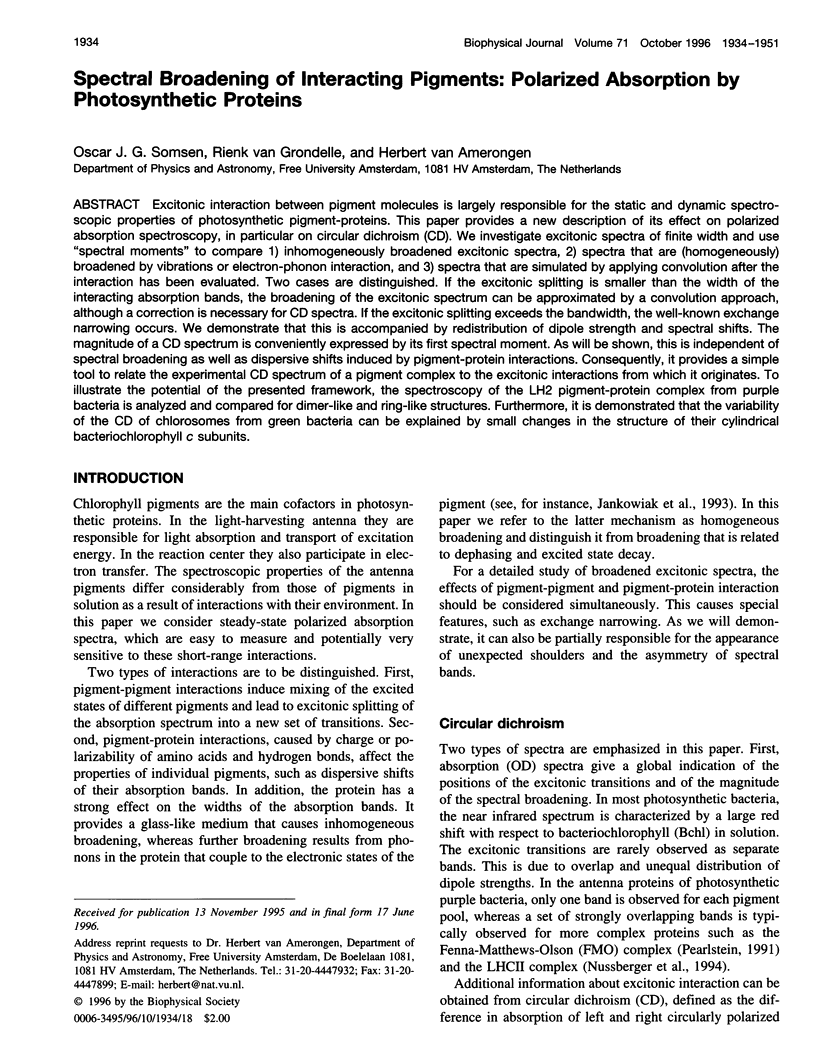
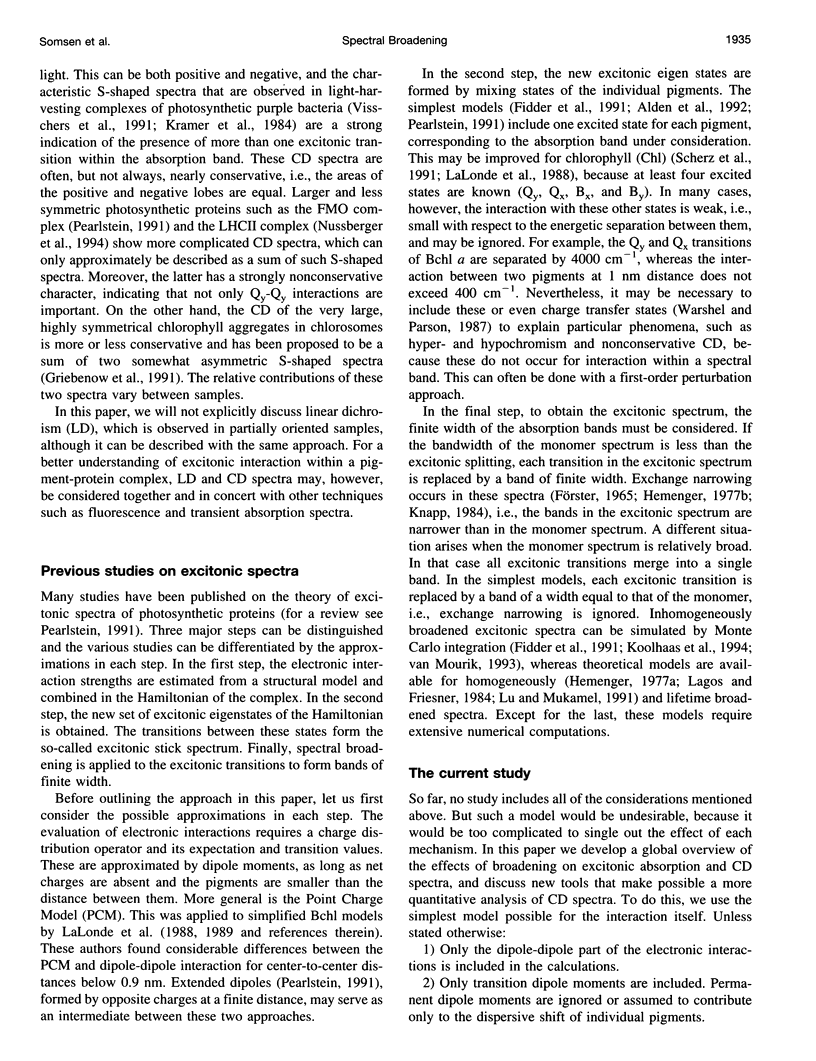
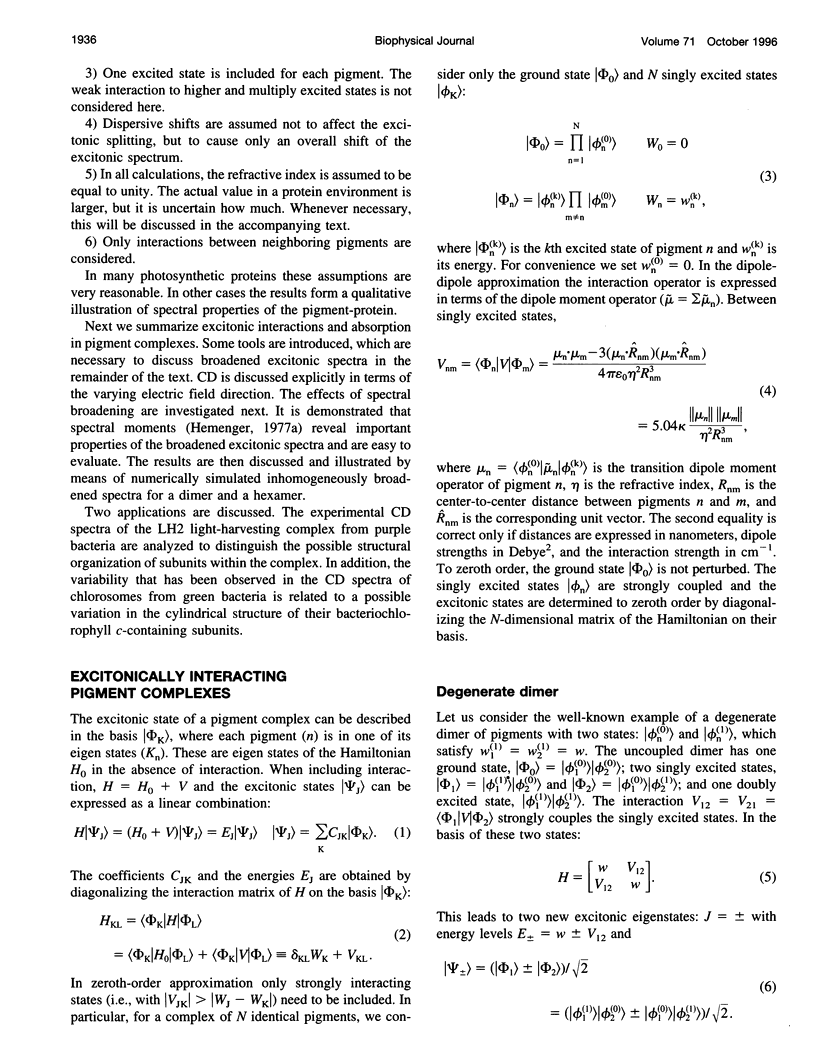
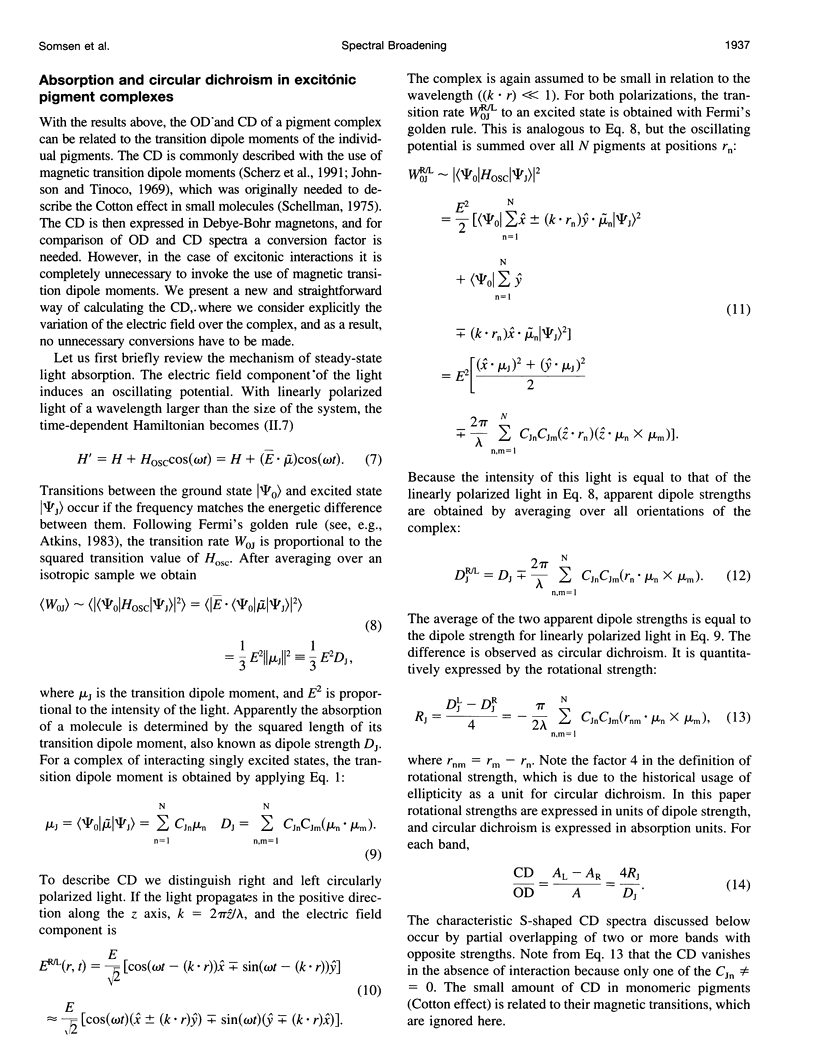
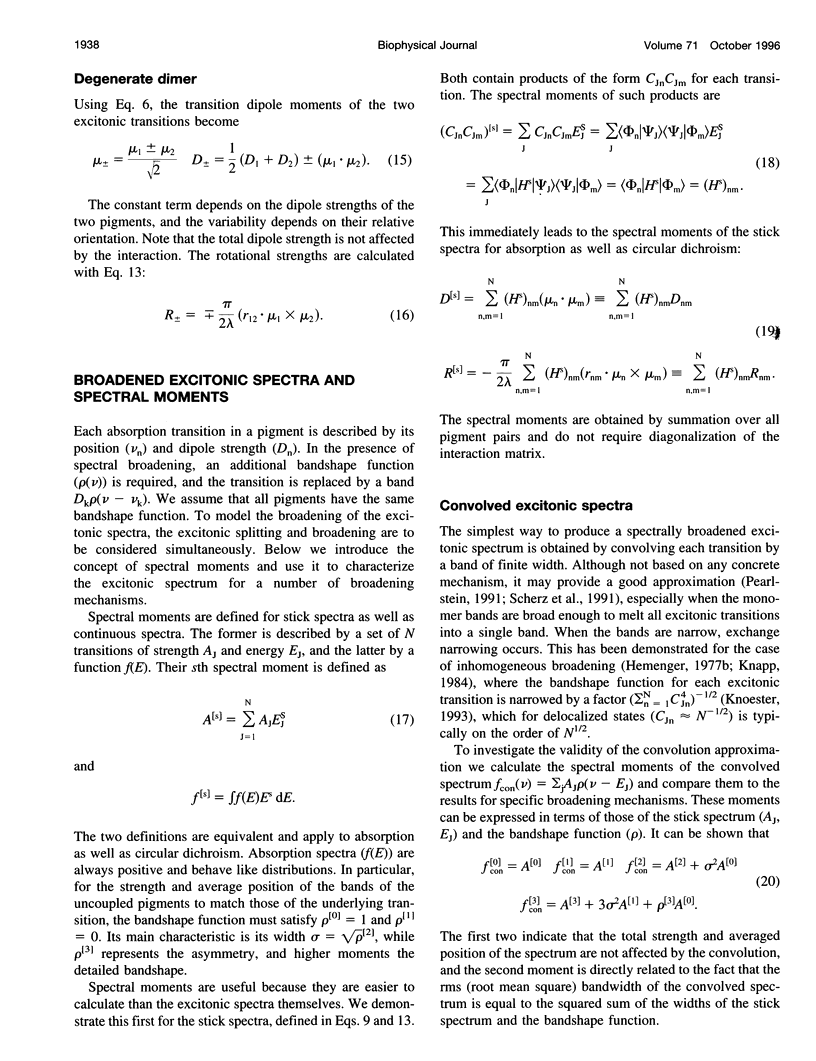
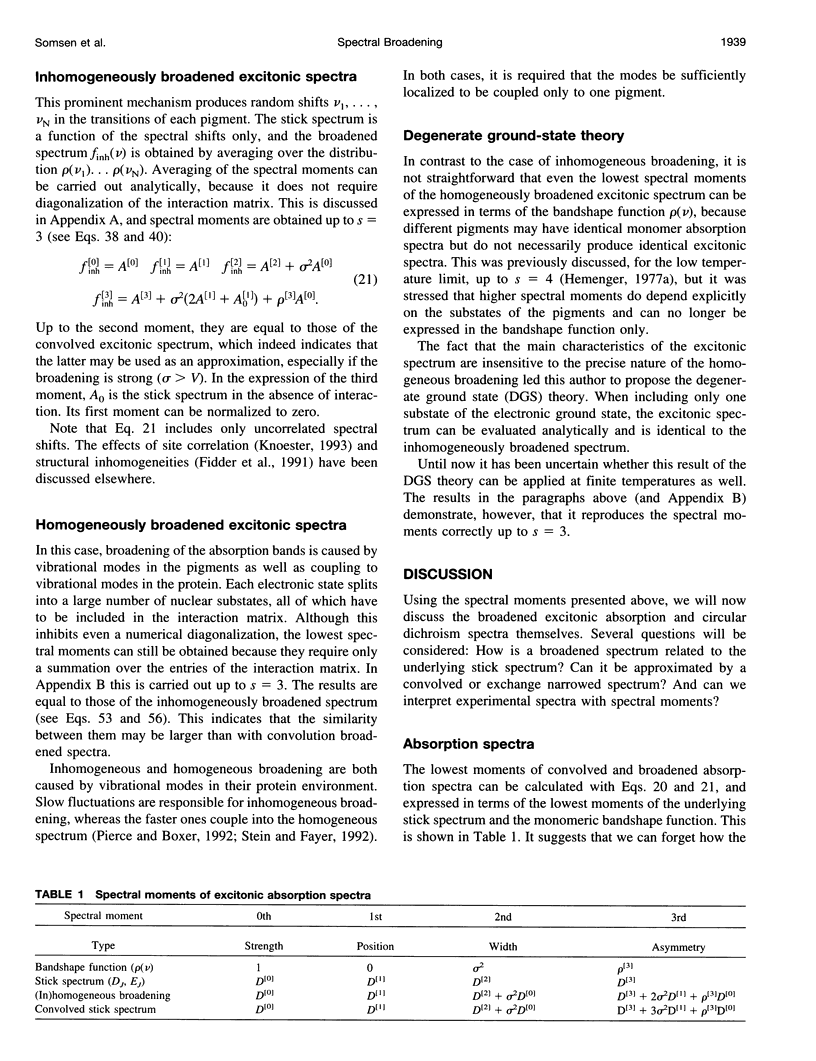
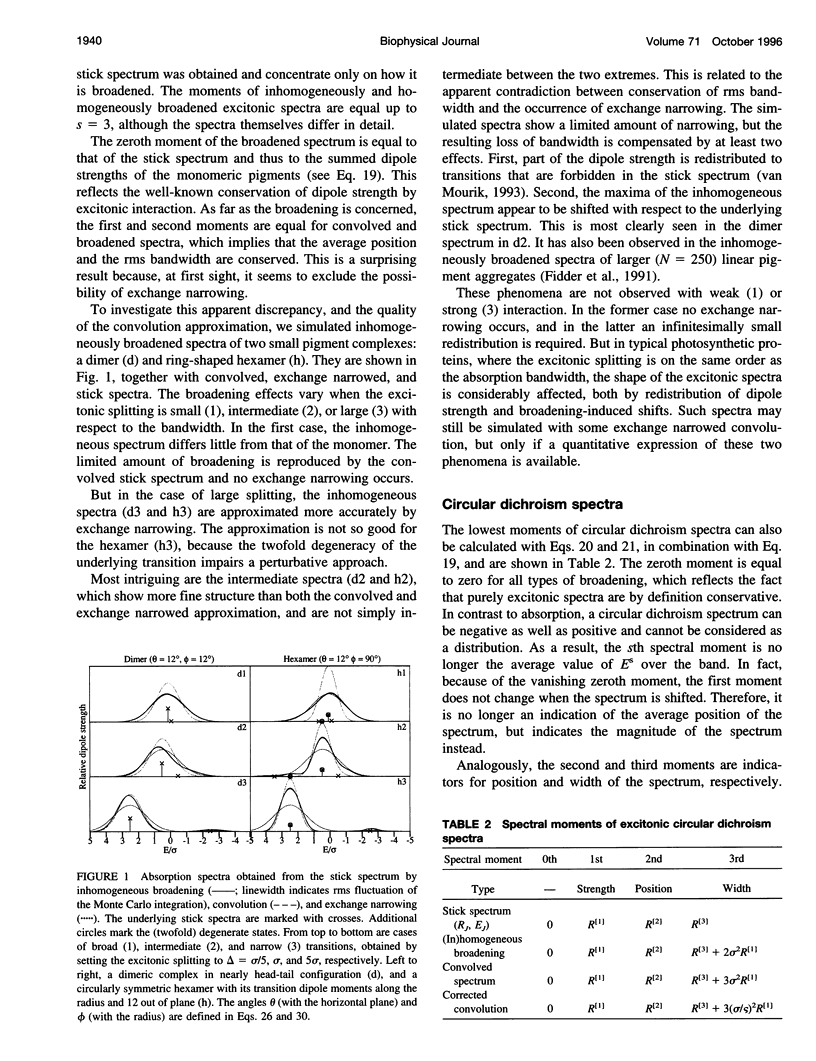
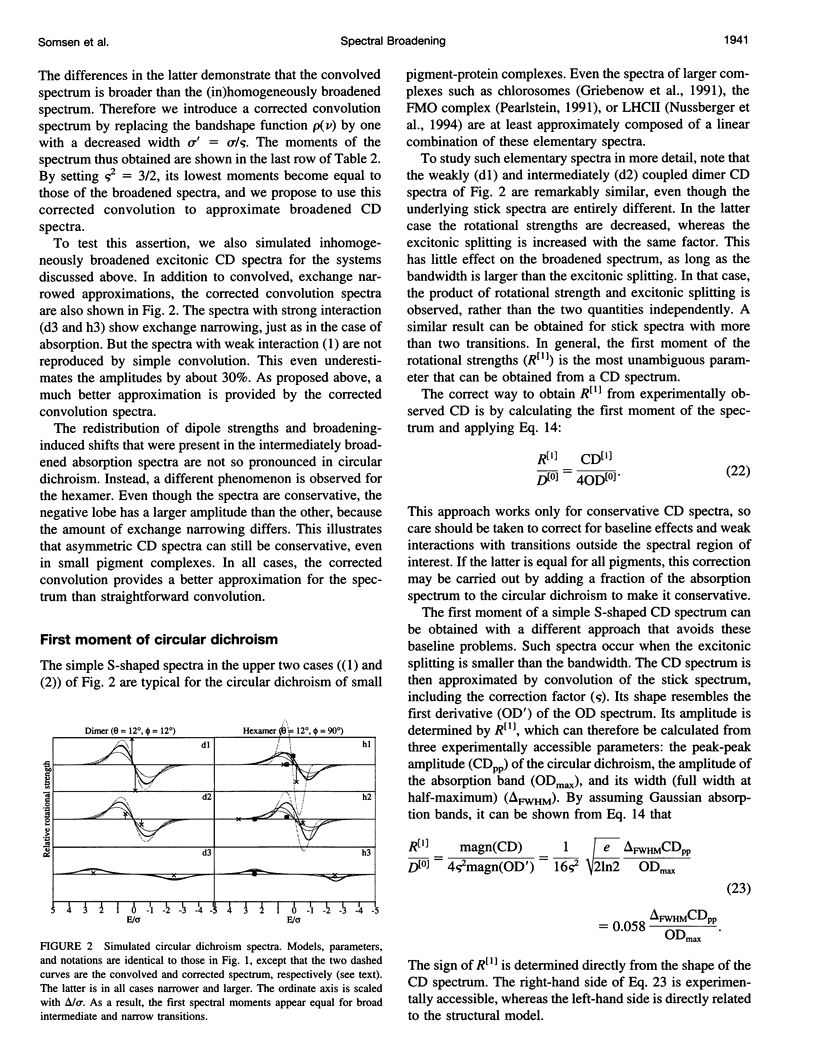
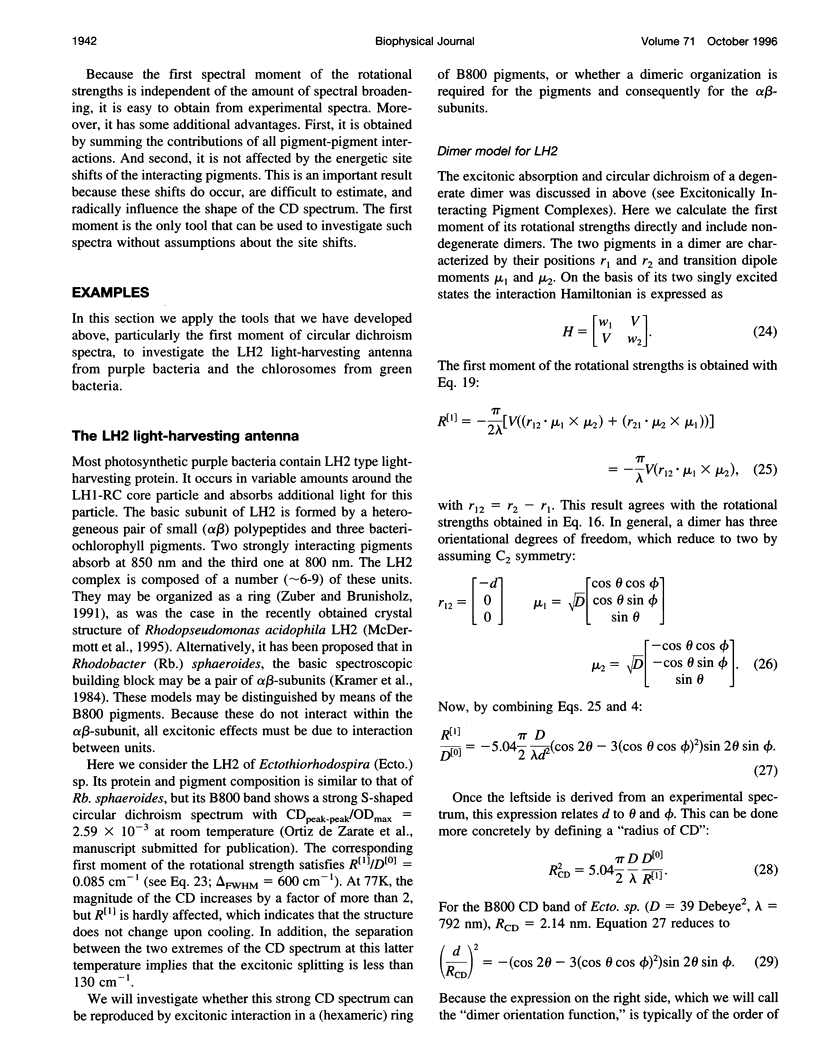
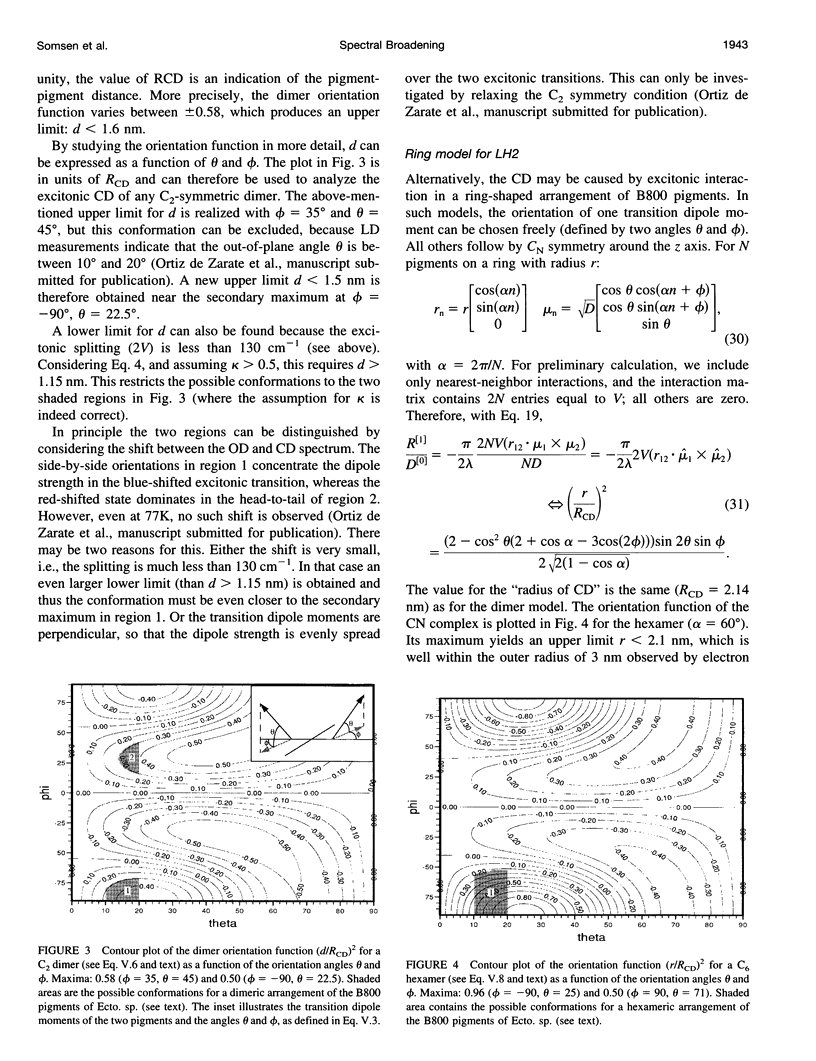
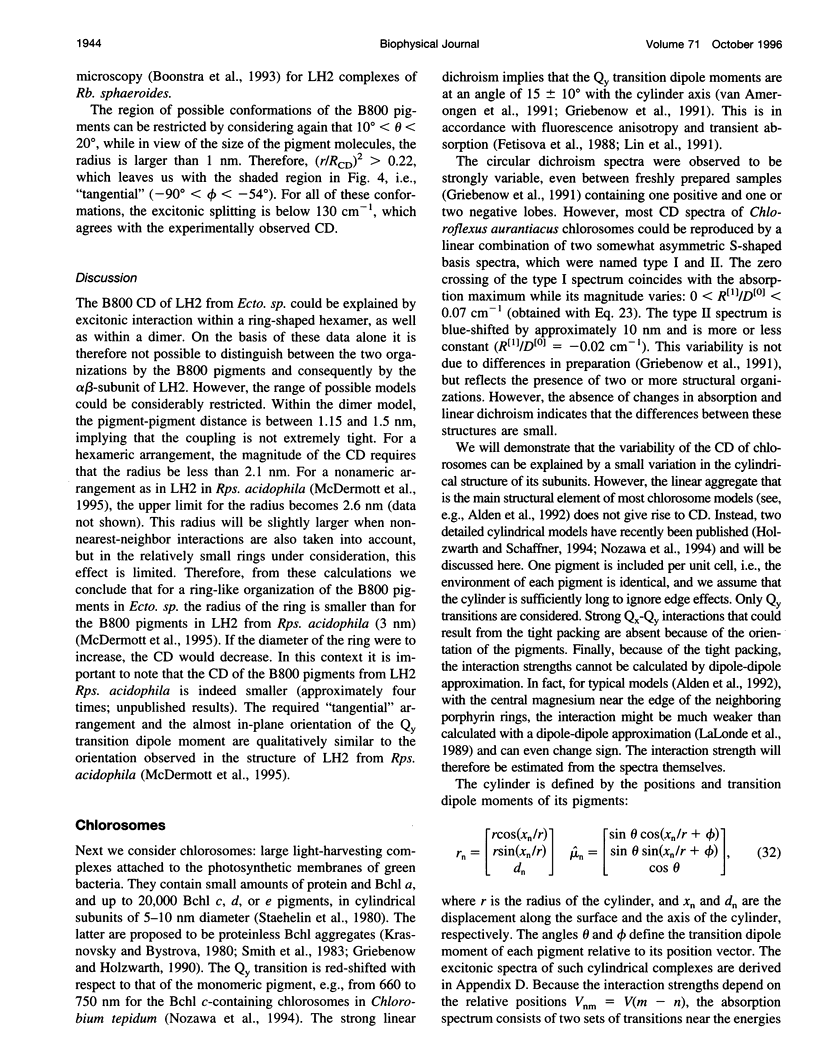
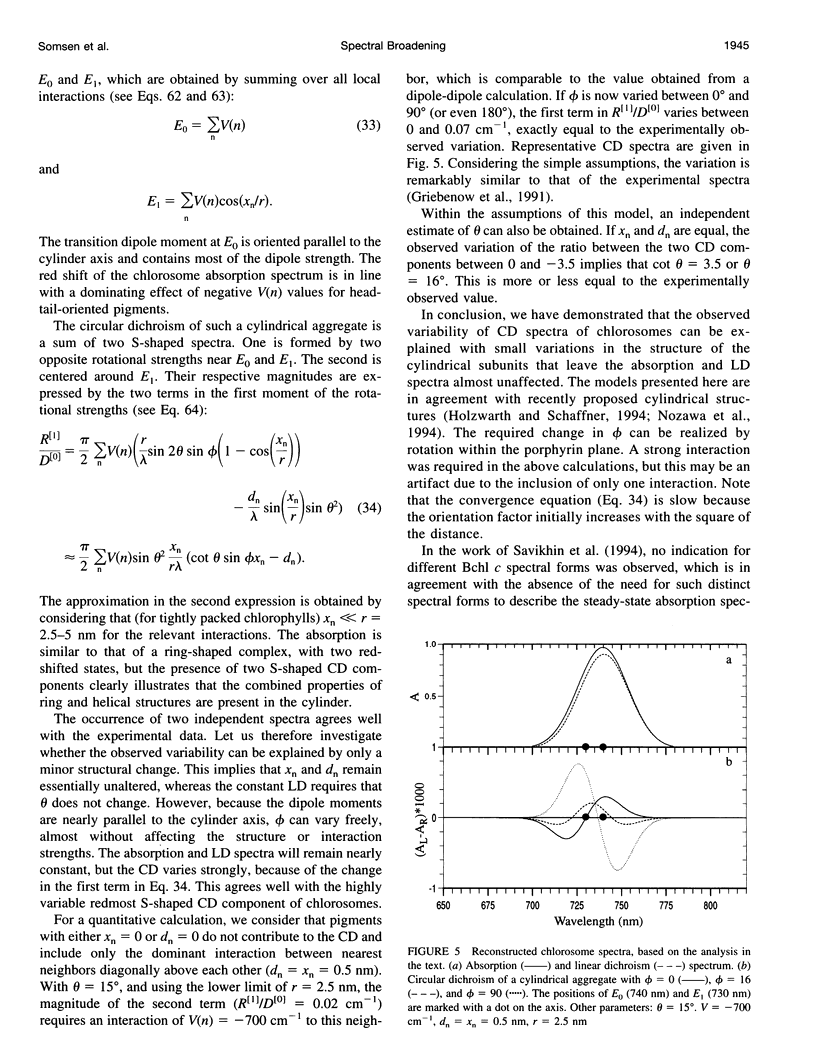
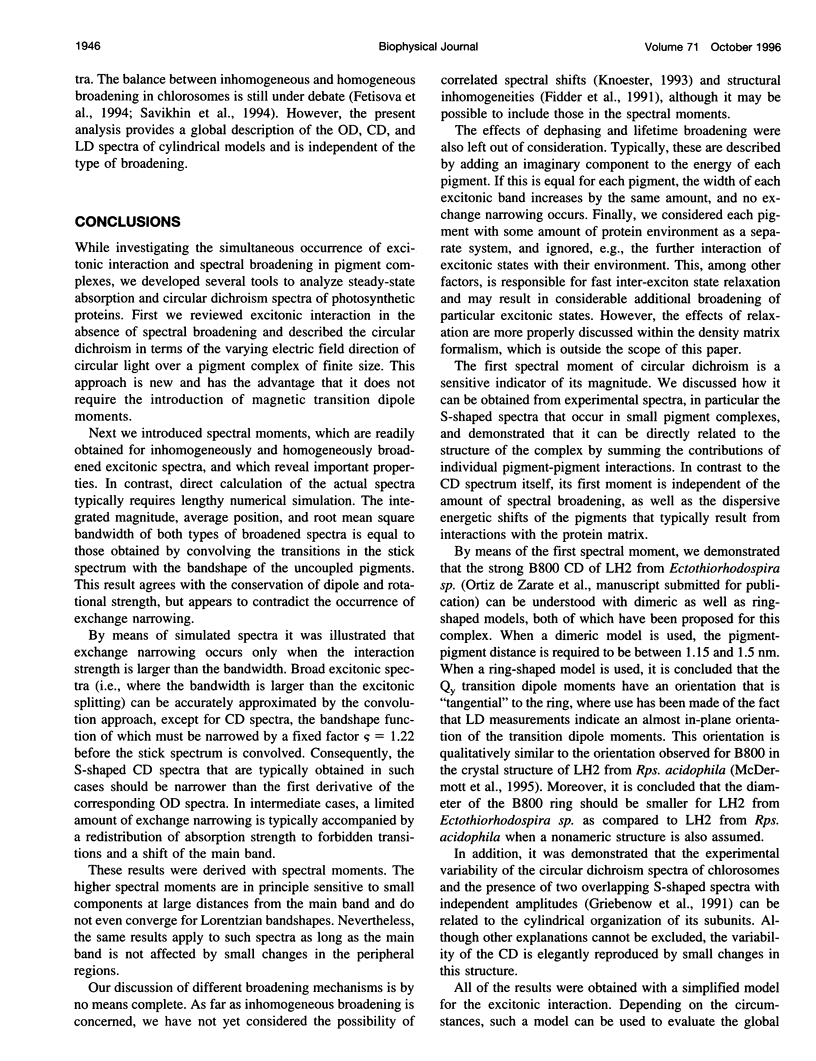
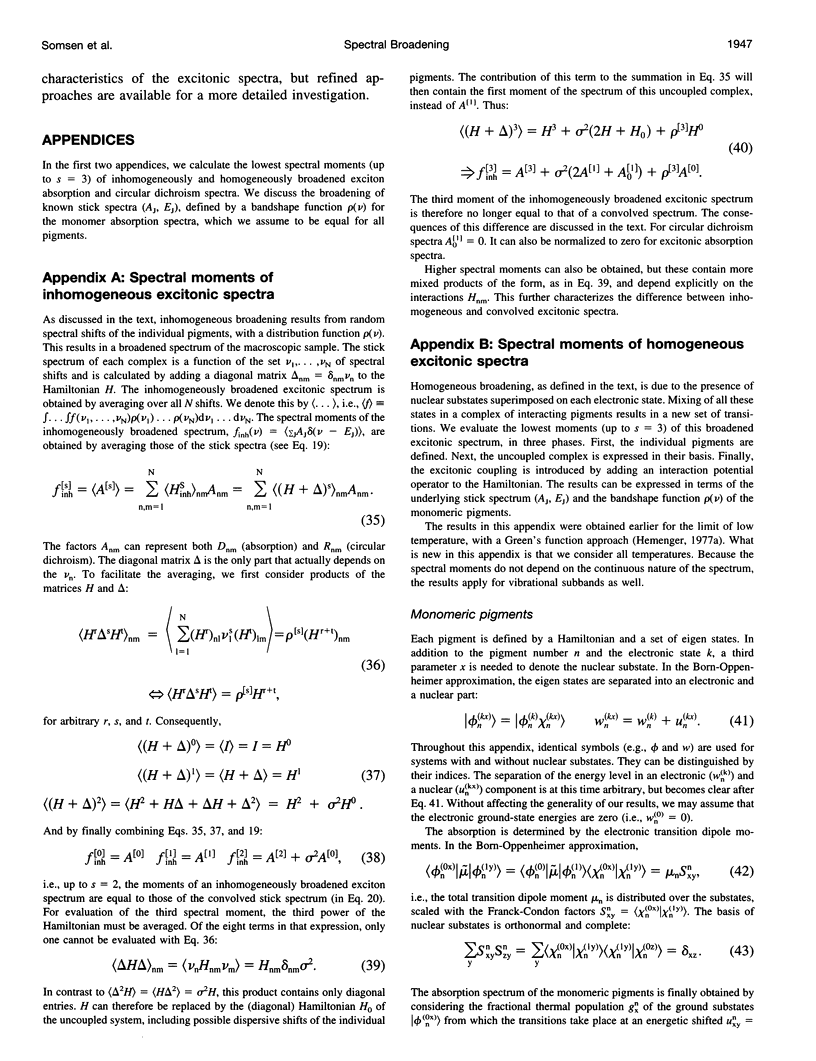
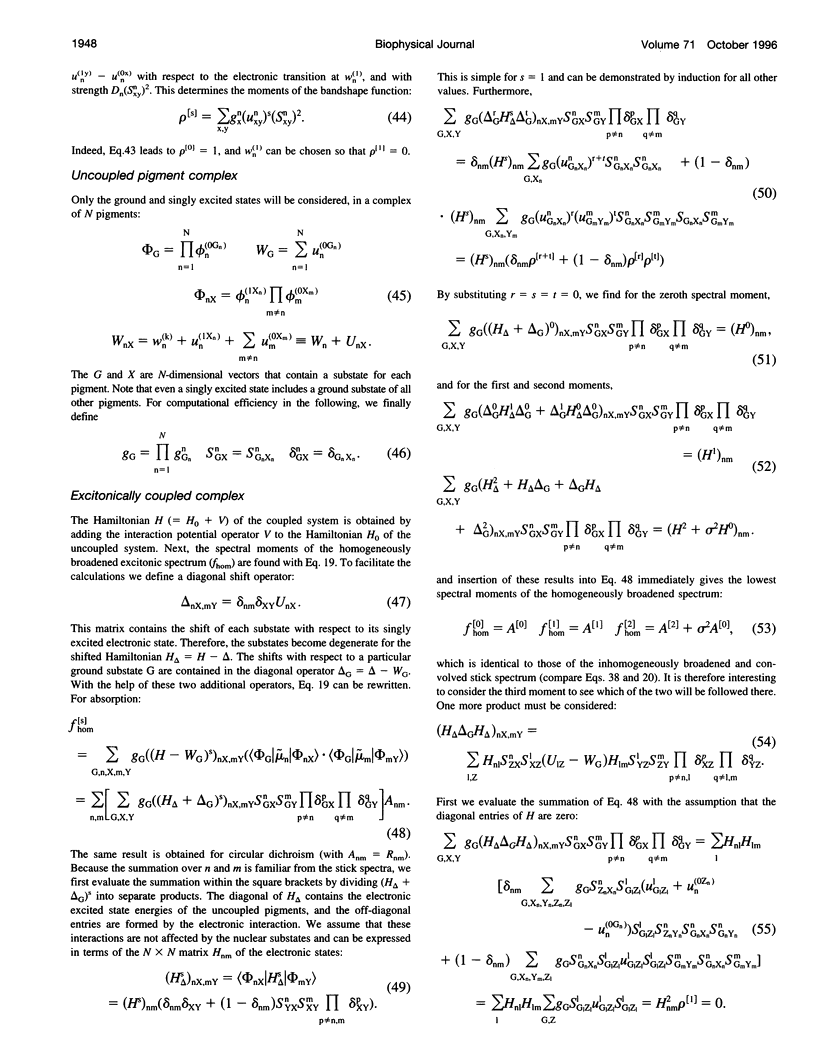
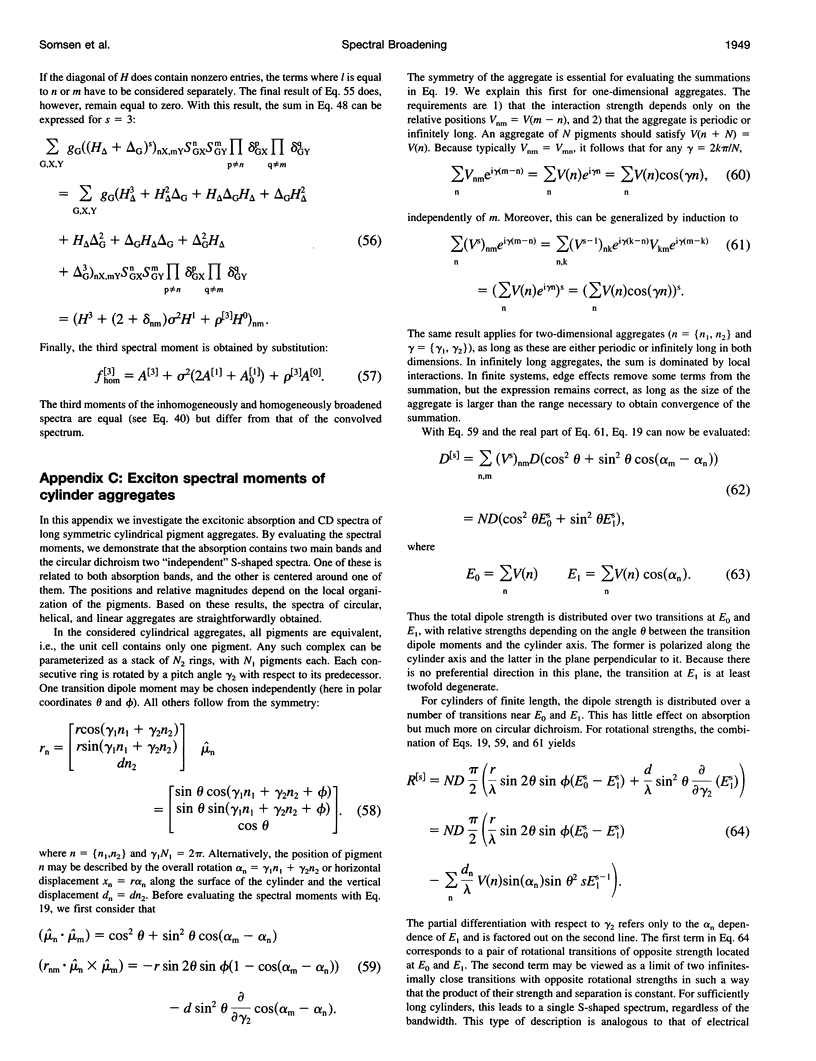
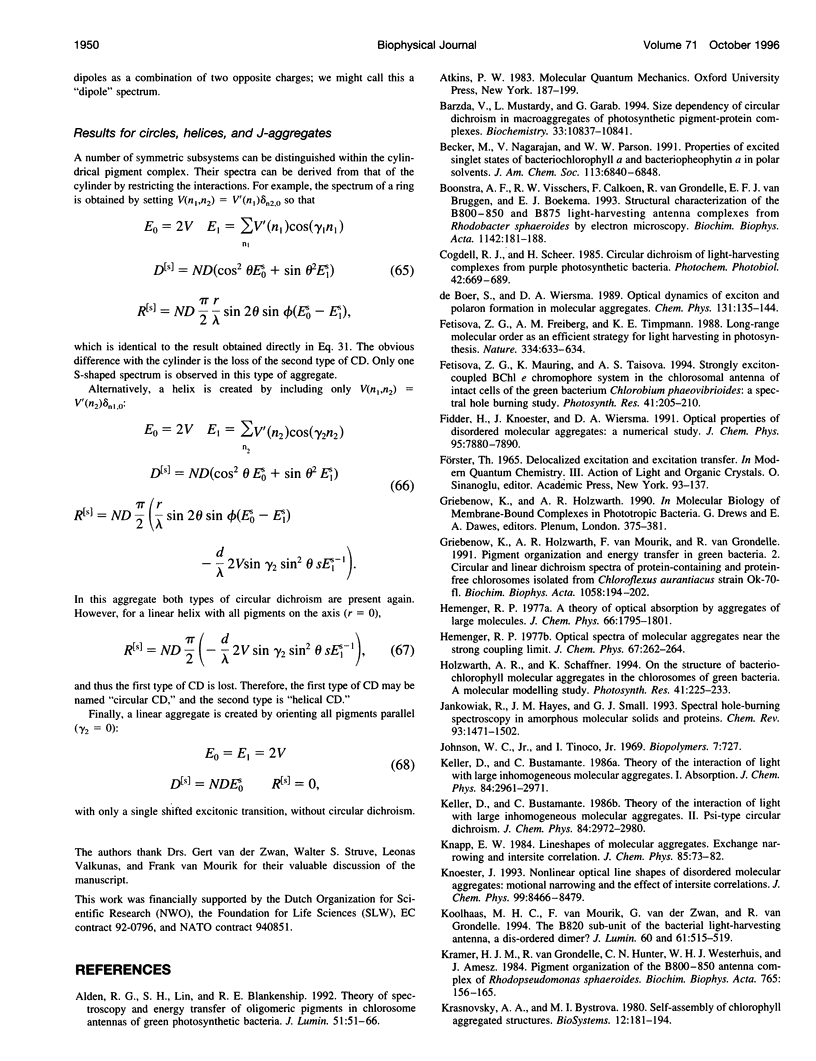
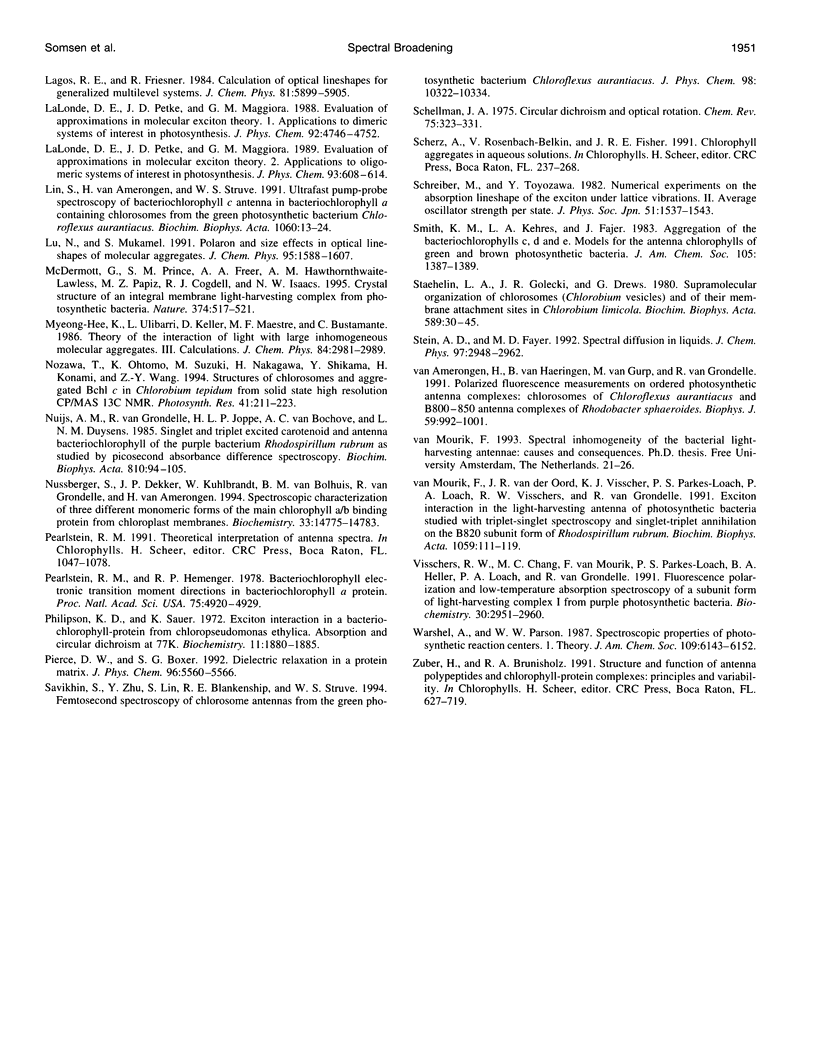
Images in this article
Selected References
These references are in PubMed. This may not be the complete list of references from this article.
- Barzda V., Mustárdy L., Garab G. Size dependency of circular dichroism in macroaggregates of photosynthetic pigment-protein complexes. Biochemistry. 1994 Sep 6;33(35):10837–10841. doi: 10.1021/bi00201a034. [DOI] [PubMed] [Google Scholar]
- Krasnovsky A. A., Bystrova M. I. Self-assembly of chlorophyll aggregated structures. Biosystems. 1980;12(3-4):181–194. doi: 10.1016/0303-2647(80)90016-7. [DOI] [PubMed] [Google Scholar]
- Nussberger S., Dekker J. P., Kühlbrandt W., van Bolhuis B. M., van Grondelle R., van Amerongen H. Spectroscopic characterization of three different monomeric forms of the main chlorophyll a/b binding protein from chloroplast membranes. Biochemistry. 1994 Dec 13;33(49):14775–14783. doi: 10.1021/bi00253a016. [DOI] [PubMed] [Google Scholar]
- Pearlstein R. M., Hemenger R. P. Bacteriochlorophyll electronic transition moment directions in bacteriochlorophyll a-protein. Proc Natl Acad Sci U S A. 1978 Oct;75(10):4920–4924. doi: 10.1073/pnas.75.10.4920. [DOI] [PMC free article] [PubMed] [Google Scholar]
- Philipson K. D., Sauer K. Exciton interaction in a bacteriochlorophyll--protein from Chloropseudomonas ethylica. Absorption and circular dichroism at 77 degrees K. Biochemistry. 1972 May 9;11(10):1880–1885. doi: 10.1021/bi00760a024. [DOI] [PubMed] [Google Scholar]
- Staehelin L. A., Golecki J. R., Drews G. Supramolecular organization of chlorosomes (chlorobium vesicles) and of their membrane attachment sites in Chlorobium limicola. Biochim Biophys Acta. 1980 Jan 4;589(1):30–45. doi: 10.1016/0005-2728(80)90130-9. [DOI] [PubMed] [Google Scholar]
- van Amerongen H., van Haeringen B., van Gurp M., van Grondelle R. Polarized fluorescence measurements on ordered photosynthetic antenna complexes: Chlorosomes of Chloroflexus aurantiacus and B800-B850 antenna complexes of Rhodobacter sphaeroides. Biophys J. 1991 May;59(5):992–1001. doi: 10.1016/S0006-3495(91)82314-1. [DOI] [PMC free article] [PubMed] [Google Scholar]




